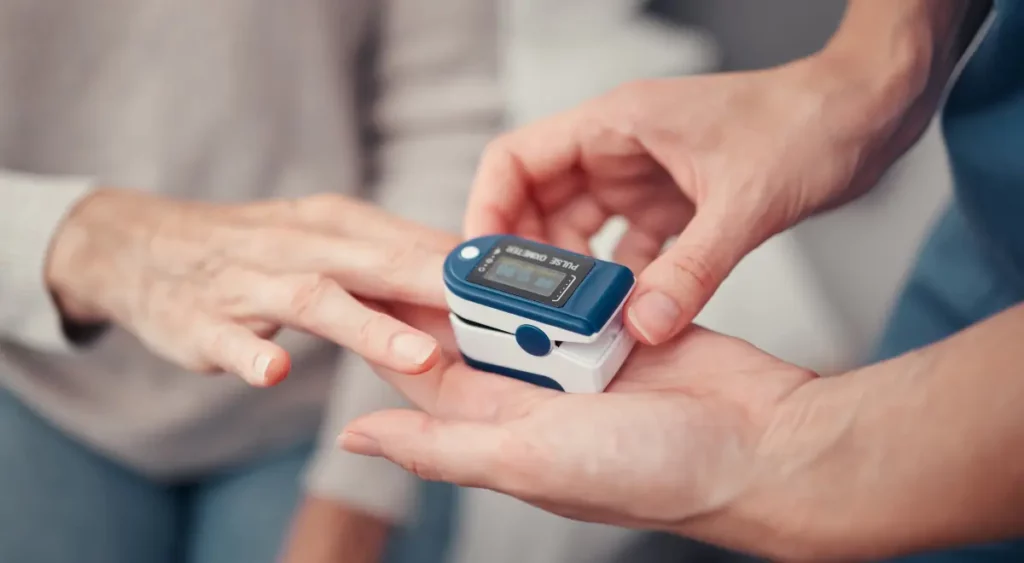FDA-Approved RPM Devices: What Providers Need to Know

Remote Patient Monitoring (RPM) devices allow healthcare providers to monitor, report, and analyze patients’ health vitals from outside the hospital settings. With real-time monitoring of a patient’s health condition, these devices help clinicians, physicians, and healthcare providers in making proactive clinical decisions and timely interventions.
Adhering to the Food and Drug Administration (FDA) compliance is a critical requirement for cellular enabled RPM devices. To avoid discrepancies, manufacturing defects, and other connection problems, there are several compliance laws that need to be followed. Though all remote patient monitoring devices must comply with HIPAA security and compliance standards, not all of them meet the FDA standards. Some key considerations regarding FDA standards for RPM devices are:
- Classification: RPM devices are classified as Class II devices, requiring premarket notification (510(k)).
- Quality System Regulation (QSR): Manufacturers must adhere to QSR, including design, manufacturing, and post-market surveillance.
- Labeling Requirements: Devices must have clear labeling for instructions, indications, warnings, or contraindications.
- Software Validation: Software-based devices require validation, such as checking if the device meets certain regulatory and safety standards to ensure functionality, reliability, and security.
- Cyber Security: FDA emphasizes the importance of incorporating cyber security measures to protect patient information.
- Clinical Validation: Devices should have evidence supporting their clinical claims.
Table of Contents
ToggleTypes/ Categories of RPM Devices
- Wearable Devices: These devices include general health tracking gadgets like smart watches and fitness bands that track vital metrics including, heart rate, oxygen saturation, and physical activity but don’t report the outcomes to the healthcare providers. To explore the evolving role of wearables in RPM, check out our dedicated article on how these devices are shaping the future of remote healthcare.
- Diagnostic Devices: These devices are used to diagnose vital health metrics, such as ECG monitors. After diagnosing, they report the critical health data to the healthcare providers.
- Home Monitoring Devices: These devices allow providers to monitor their patients’ vitals in the comfort of their home by facilitating real-time health data collection, for example blood glucose monitors.
- Imaging Devices: These RPM devices are capable of capturing and transmitting imaging data, which can be vital for remote diagnosis and monitoring.
Top FDA-approved Remote Health Monitoring Devices
- Pulse Oximeter: A pulse oximeter can detect both the pulse and light wavelength, which represents the blood oxygen level. This device is used by healthcare providers to identify and track the vitals of patients suffering from chronic cardiac diseases and lung disorders, asthma, and other chronic conditions.
- Glucometer: A glucometer monitors diabetic patients’ blood sugar levels. These devices use a sensor attached to the patient’s finger to draw blood. This allows providers to keep a track of the patient’s blood sugar levels and guide them on how to control diabetes effectively.
- Blood Pressure Cuff: Blood pressure cuff is used to monitor the blood pressure levels of a chronic patient suffering from kidney dysfunction, hypertension, or diabetes. Regular blood pressure monitoring helps providers understand what causes the patients’ blood pressure levels to rise by closely monitoring the trends. This helps in developing the most effective treatment strategy.
- Thermometer: High body temperature is a common symptom in many chronic or acute healthcare problems. Accurate body temperature readings allow providers to move forward with the next treatment step. Since some chronic illnesses require routine temperature checks to avoid health complications, thermometers are one of the most used FDA approved RPM devices.
- Weighing Scale: Weight scales are helpful in managing any chronic illness symptom that causes changes in the patient’s weight. Weight scales allow obese patients in detecting patterns in their daily lifestyle by enabling them to self-manage and track their weight regularly.
Track Patients’ Vitals With HealthArc’s RPM Devices
FDA-approved remote patient monitoring devices are greatly transforming the modern day healthcare industry by enhancing patient engagement, improving clinical outcomes, and access to care. As RPM continues to evolve, staying informed about new monitoring devices can help optimize patient care and adapt to the changing healthcare environment.
With HealthArc’s remote patient monitoring devices, physicians can manage patients’ daily healthcare data and provide them the right care, support, and interventions. Our digital health platform automatically tracks the vitals of the patients and updates the healthcare professional’s dashboard by generating the patient’s clinical report. Book a demo or call us at (201) 885 5571 for more information.
Frequently Asked Questions (FAQs)
FDA-cleared devices (Class II medical devices) usually undergo what is called the 510(k) process, which determines safety and effectiveness based on comparison to existing devices. “FDA-approved” is only applicable to higher-risk Class III devices which undergo a more thorough process. Terms could be misquoted, so checking the approval status with the FDA Devices database is a must.
RPM devices must be a medical device in the eyes of the FDA, which includes measuring some area of physiological data and transmitting it to the provider remotely, to guarantee precision, safety, and will be accepted for reimbursement. Devices that do not abide could put data accuracy along with billing approval at risk.
Cellular-enabled RPM device makers must comply with the QSR, its labeling requirements, and 510(k) for Class II devices. In addition, they must uphold the standards of the HIPAA privacy rule.
RPM services (CPT codes 99453 and 99454) tracking and monitoring equipment is often reimbursed by Medicare and numerous private health insurance providers abandoning RPM service tracking and monitoring equipment that is not FDA cleared may result in loss of reimbursement.
Blood pressure cuffs, glucose meters, pulse oximeters, weight scales, spirometers, and spirometers are continuously glucose monitoring devices.
HealthArc devices are FDA approved and 4G (2G fallback) cellular connected requiring no app pairing, making them easy for the patient to use and reliable in low-internet regions. They are issued by providers for seamless real-time monitoring and compliance ready billing.
Is the RPM device approved or cleared by the FDA? Does it send data in a safe fashion that follows HIPAA rules? Does it work with the EHR or RPM ecosystem? You should also put usability, device connectivity, and device reliability at the top of your list.
Although not all RPM systems require FDA approval, the use of non‑FDA-cleared devices poses challenges concerning data integrity and may have billing implications. For the best possible outcomes, cleared devices are preferable for use in clinical practice.
Bibliography
- FDA Guidance on Digital Health Technologies
This page includes guidelines on the regulation of digital health technologies, including RPM devices- FDA Digital Health Center of Excellence - FDA’s List of Cleared or Approved Devices
A searchable database of all FDA-cleared and approved medical devices, including RPM devices- FDA Medical Device Databases - CDC Telehealth and Remote Patient Monitoring Resources
Offers insights into telehealth and RPM, particularly in the context of public health- CDC Telehealth Resources
Most Recent Blogs
Categories
Related Blog
- November 26, 2025 | Read Time: 14 mins
Return on Investment (ROI) of Remote Patient Monitoring (RPM): A Complete Guide for ACOs and Healthcare Organizations
The U.S. healthcare system continues its transition from fee-for-service models to value-based...
Learn More- November 24, 2025 | Read Time: 15 mins
Common RPM Pricing Models for Providers: A Profitability-Focused Guide
Remote Patient Monitoring (RPM) has rapidly emerged as one of the leading...
Learn More- October 23, 2025 | Read Time: 12 mins
How RPM Devices Improve Hypertension and Diabetes Outcomes in Medicare Populations
Remote patient monitoring (RPM) is transforming chronic care for Medicare beneficiaries. CMS...
Learn More


